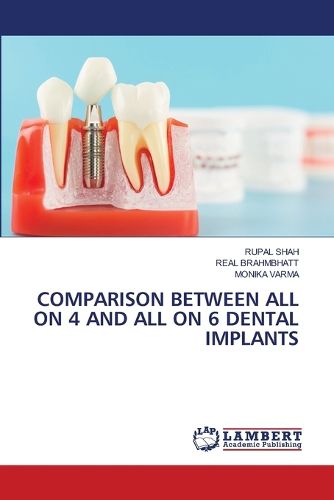Readings Newsletter
Become a Readings Member to make your shopping experience even easier.
Sign in or sign up for free!
You’re not far away from qualifying for FREE standard shipping within Australia
You’ve qualified for FREE standard shipping within Australia
The cart is loading…






Edentulism is recognized as a physical disability that severely compromises nutrition, speech, self-esteem, and perceived aesthetics. However, advances in dental implant surgery have led to more options being available for such patients, including implant-retained dentures, implant-supported removable dentures, and implant-supported fixed dentures. Implants have been used to support dental prostheses for many decades. The finding that the bone response was more favorable when the all-on-six technique was used came as no real surprise. Obviously, the distribution of the load applied to the superstructure (i.e. the prosthesis) is more favorable when the superstructure is supported by six implants. Another question was whether inclined implants would lead to a less favorable bone response on either side according to technique and as compared to non-inclined implants inserted according to the same technique. We found similar bone loss regardless of whether the inclined implants were inserted according to the all-on-four or the all-on-six protocol, and the bone loss was comparable with the bone loss seen with the non-inclined implants.
$9.00 standard shipping within Australia
FREE standard shipping within Australia for orders over $100.00
Express & International shipping calculated at checkout
Edentulism is recognized as a physical disability that severely compromises nutrition, speech, self-esteem, and perceived aesthetics. However, advances in dental implant surgery have led to more options being available for such patients, including implant-retained dentures, implant-supported removable dentures, and implant-supported fixed dentures. Implants have been used to support dental prostheses for many decades. The finding that the bone response was more favorable when the all-on-six technique was used came as no real surprise. Obviously, the distribution of the load applied to the superstructure (i.e. the prosthesis) is more favorable when the superstructure is supported by six implants. Another question was whether inclined implants would lead to a less favorable bone response on either side according to technique and as compared to non-inclined implants inserted according to the same technique. We found similar bone loss regardless of whether the inclined implants were inserted according to the all-on-four or the all-on-six protocol, and the bone loss was comparable with the bone loss seen with the non-inclined implants.